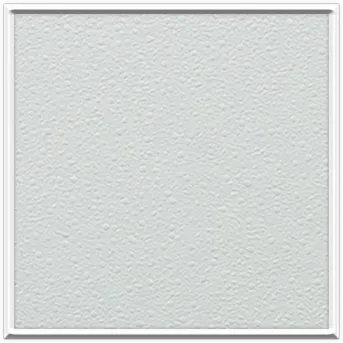- Afrikaans
- Albanian
- Amharic
- Arabic
- Armenian
- Azerbaijani
- Basque
- Belarusian
- Bengali
- Bosnian
- Bulgarian
- Catalan
- Cebuano
- Corsican
- Croatian
- Czech
- Danish
- Dutch
- English
- Esperanto
- Estonian
- French
- German
- Greek
- Hindi
- Indonesian
- irish
- Italian
- Japanese
- Korean
- Lao
- Malay
- Myanmar
- Norwegian
- Norwegian
- Polish
- Portuguese
- Romanian
- Russian
- Serbian
- Spanish
- Swedish
- Thai
- Turkish
- Ukrainian
- Uzbek
- Vietnamese
nov. . 22, 2024 11:18 Back to list
gypsum and grid ceiling
Understanding Gypsum and Grid Ceilings A Comprehensive Overview
Gypsum and grid ceilings are popular choices in modern architecture and interior design. These systems provide aesthetic appeal, structural benefits, and functional advantages, making them ideal for a variety of applications. This article explores the features, benefits, and installation processes associated with gypsum and grid ceilings, shedding light on why they are favored in both residential and commercial spaces.
What is Gypsum Ceiling?
Gypsum ceilings, often referred to as drywall or plasterboard ceilings, are created from gypsum plaster that is sandwiched between two layers of thick paper. These ceilings offer a smooth finish, are easy to paint, and can be designed to fit any architectural style. Gypsum ceilings are favored for their fire-resistant properties, sound insulation capabilities, and ability to be shaped into various profiles, making them highly versatile.
One of the significant advantages of gypsum ceilings is their aesthetic flexibility. They can be designed to accommodate various lighting fixtures, create interesting architectural features, and allow for intricate designs formed by curves and angles. Furthermore, gypsum is a sustainable material, contributing to green building initiatives as it is often made from recycled materials.
The Grid Ceiling System
Grid ceilings, also known as drop ceilings or suspended ceilings, consist of a framework of metal grids that support acoustic tiles, panels, or gypsum boards. The tiles fit into the grid, creating an easily accessible ceiling space that can conceal wiring, ductwork, and plumbing. This accessibility is one of the primary reasons grid ceilings are favored in commercial buildings, where maintenance is often a priority.
Grid ceilings are highly functional, providing excellent sound absorption, which is essential in busy office environments. The modular nature of grid ceilings allows for easy replacement of tiles or panels, ensuring that any necessary repairs can be performed quickly and efficiently. Moreover, grid ceilings are available in a wide range of designs and finishes, enabling customization to match the interior decor.
gypsum and grid ceiling

Benefits of Combining Gypsum and Grid Ceilings
While gypsum and grid ceilings serve different functions and applications, combining them can maximize the benefits of both systems. For instance, using a gypsum board within a grid ceiling framework can enhance sound insulation while maintaining the ability to access infrastructure behind the ceiling. This combination can support a clean aesthetic without sacrificing functionality.
Moreover, integrating gypsum panels into a grid ceiling allows for the implementation of varied design elements such as geometric patterns, curves, and different textures. Architects and designers can create unique visual statements while ensuring that the ceiling remains practical for everyday use.
Installation Process
Installing a gypsum or grid ceiling involves several steps, beginning with the planning phase, where measurements and design elements are determined. For a gypsum ceiling, frames made from metal or wood are installed, followed by attaching the gypsum boards to the framework. The joints are then taped, mudded, and sanded to create a seamless surface ready for painting.
For grid ceilings, the initial step involves fixing the main runner channels to the ceiling. Cross tees are then installed to form the grid. Finally, tiles or gypsum panels are placed into the grid. This modular system offers adaptability as new tiles can be added or replaced with ease.
Conclusion
In conclusion, gypsum and grid ceilings present an excellent choice for enhancing the aesthetic and functional qualities of any space. Their versatility, ease of installation, and compatibility with various design elements make them popular choices in both residential and commercial applications. By understanding the unique benefits of each system and considering a combination of the two, designers and builders can create inviting, practical environments that meet modern standards of style and functionality. Whether renovating a home or designing a new office, considering gypsum and grid ceilings could be a step toward achieving a sophisticated and efficient interior.
-
Transform Interiors with PVC Gypsum Ceiling: A Stylish, Durable, and Moisture-Resistant SolutionNewsMay.19,2025
-
The Smart Interior Upgrade: Discover the Durability and Versatility of Gypsum Ceiling Access Panel SolutionsNewsMay.19,2025
-
The Smart Choice for Interior Design: Discover the Value of PVC Gypsum Ceiling SolutionsNewsMay.19,2025
-
Mineral Fiber Ceiling Tiles: The Smart Blend of Performance and AestheticsNewsMay.19,2025
-
Mineral Fiber Ceiling Tiles: The Superior Choice Over Gypsum for Sound and Fire SafetyNewsMay.19,2025
-
Mineral Fiber Ceiling Tiles: Eco-Friendly Strength and Style for Every CeilingNewsMay.19,2025







